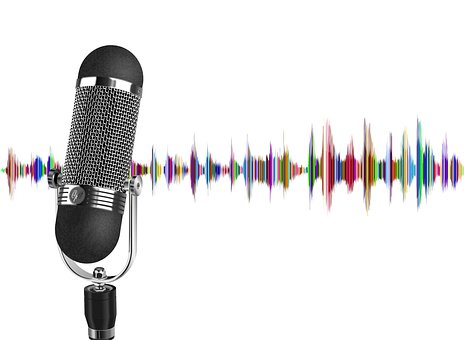All 1st Grade Science Resources
Example Questions
Example Question #1 : Investigate How Sound Makes Materials Vibrate
What causes all sounds?
Plants
We do not know
Vibrations
Vibrations
Vibrations cause all sounds. When something vibrates sound waves are sent through the air to our ears to hear. Without vibrations there would be no sounds.
Example Question #181 : 1st Grade Science
How does sound travel to our ears?
Ocean waves
A waving hand
Sound waves
Sound waves
Sound travels to our ears through sound waves. Once something vibrates sound waves travel through the air and our ears receive and process the sounds.
Example Question #181 : 1st Grade Science
Which would be an example of something vibrating to make a sound?
Winking at a friend
Plucking a stretched rubber band
Watching a movie
Plucking a stretched rubber band
Creating sound is done by making vibrations. Plucking a stretched rubber band would cause the object to vibrate and sound waves would be created. We would hear a sound if we listen to the rubber band.
Example Question #2 : Investigate How Sound Makes Materials Vibrate
Vibrating materials make a sound. What can we change about a sound by making it vibrate differently?
The sound cannot be changed.
How good or bad it sounds.
The volume and pitch.
The volume and pitch.
We can change the volume or pitch of something when we change the way it vibrates. Volume is how loud or soft something sounds and pitch is how high or low the sound is. By making something vibrate more or less, faster or slower, we can change the way it sounds.
Example Question #1 : Investigate How Sound Makes Materials Vibrate
Vibrations of materials make sounds. The vibration of an object creates sound waves that travel to our ears.
What are vibrations?
A way to measure how tall something is
A type of small animal
Fast back-and-forth movements
Fast back-and-forth movements
Vibrations are quick back-and-forth movements that create sound waves that travel to our ears for us to hear. An example would be the vibrate setting on a cell phone or holding a ruler off a desk and flicking it so it bounces back and forth on the edge of the table.
Example Question #1 : Investigate How Sound Makes Materials Vibrate
Put a plastic ruler at the edge of the table so half of it hangs over the edge. Observe the ruler. Hold the ruler down with the palm of one hand on the table. With your other hand push the end of the ruler down and let it go. Observe the ruler again.
How does this investigation demonstrate vibrating materials making a sound?
When the ruler is moving, there is no sound, when it is still, a sound is heard.
When the ruler is still, there is no sound, when it begins to vibrate, a sound is heard.
This investigation would not help students learn about vibrations and sound.
When the ruler is still, there is no sound, when it begins to vibrate, a sound is heard.
This investigation demonstrates the difference between a still ruler (no movement or sound) versus a ruler that has been pushed and caused to vibrate (moves up and down, and there is a sound). When the ruler is still, there is no sound, when it begins to vibrate, a sound is heard. This shows that vibrations make sounds.
Example Question #3 : Investigate How Sound Makes Materials Vibrate
How does this drum make a sound?

Waving
Magic
Vibrations
Vibrations
The player would bang the drumstick on the surface of the drum, which would cause a vibration of the air in the drum against the outer material. This would travel to our ears as a sound wave so we could hear the music being played.
Example Question #191 : 1st Grade Science
The rainbow-colored lines in the back are vibrations represented as _________________. They travel to our ears after a vibrating material makes a sound.

sound waves
vision waves
taste waves
sound waves
The colored lines in the background represent sound waves caused by vibrations. When an object vibrates a sound wave is created and this travels to our ear and is processed as a noise we can hear.
Example Question #2 : Investigate How Sound Makes Materials Vibrate
How is this picture similar to vibrations making a sound?

The picture is not similar to sound at all.
The picture shows a drop of water which can be very loud.
The picture and sound both include waves.
The picture and sound both include waves.
This picture demonstrates a drop of water rippling outwards in waves. A similar process happens with sound. Vibration causes a sound wave to be formed, and that sound wave moves outwards towards our ears so it can be processed into sound.
Example Question #3 : Investigate How Sound Makes Materials Vibrate
Which investigation would work best to see how vibrating materials make sounds?
List to a popular song on the radio using your ears
Hold a ruler in front of you, wave it around, and make observations
Hit a tuning fork on a desk and make observations with your five senses
Hit a tuning fork on a desk and make observations with your five senses
The best set-up of an investigation to see how vibrating materials make sounds would be to use a tuning fork. Once the metal tuning fork is hit on the best students can visually see the fork vibrating and can move their ears closer to listen. Students will be able to see and hear how the vibrations work.
All 1st Grade Science Resources




